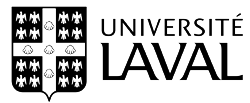Ready-to-Serve Soups
Portrait of the ready-to-serve soups available in Quebec (2017)

223 soups were listed for this study
Legume-based soups represent
30%
of the sales volume
95%
of ready-to-serve soups contain more than the 15% daily value threshold for sodium
Highlights
The results of this study on the ready-to-serve soups highlight the high degree of variability in terms of nutritional composition, depending on the ingredients, texture, container, but also according to packaging information. These analyses also point to certain areas of improvement, such as the gradual reduction of sodium for the entire soup supply, more particularly for the most purchased soups such as vegetable, starch and protein soups as well as legume soups. The largest sellers of these two types of soups account for nearly two thirds (65%) of the sodium intake from ready-to-serve soups. The classification based on packing information allows an additional analysis of the results. Certified organic soups and natural-looking soups seem to have a better nutritional composition.
Full report
The Observatory mission is to observe and monitor the evolution of the food supply in order to generate new knowledge and to act collectively at improving its quality and accessibility. The studies carried out by the Observatory aim at analyzing food categories and monitoring their evolution over time. The food categories to be studied are selected based on a rigorous approach. Indeed, after consultation with the Observatory knowledge users, the Scientific Committee prioritized the food categories to be addressed according to four main criteria: health impact, nutritional quality variability, household penetration rate and product improvement potential. As a result of this consultation, the ready-to-serve soup category was selected and analyzed. This report presents the results of this food category’s analysis.
Method
The data used for this portrait was collected in collaboration with:
Nutritional composition:

Consumer purchases:

The steps to create this portrait are:

© Food Quality Observatory - INAF, Université Laval, 2019-2021

